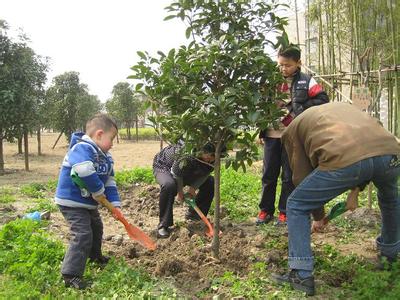Facilitating greener growth
- By Tian Huifang
 0 Comment(s)
0 Comment(s) Print
Print E-mail China Daily, November 12, 2013
E-mail China Daily, November 12, 2013
Progress has been made on raising environmental awareness of decision-makers but there are still challenges ahead
China's 12th Five-Year Plan (2011-15) seeks to promote "inclusive growth," which means ensuring the benefits of economic growth are distributed to a greater proportion of Chinese citizens. The plan's key themes are rebalancing the economy, reducing social inequality and protecting the environment.

The government has introduced a series of measures aimed at getting its pollution problem under control. A target has been set to reduce the number of carbon emissions per unit of GDP by 17 percent. The government also set a target for reducing emissions intensity in key industries by 30 percent by the end of 2017, and it is committed to producing 16 percent of its primary energy from renewable sources by 2020.
China has begun to draft a climate change law and may complete it in two years. If this law is passed, Chinese emissions standards will be applied across sectors such as power generation, iron and steel, construction, and oil and gas sectors.
The authorities have also several sustainable urban development initiatives. At the end of January 2013, the first batch of 90 pilot smart cities, including 37 prefecture-level cities, 50 districts (and counties) and three townships, were selected. Traffic management represents one of the key objectives in most of these projects.
China asked seven cities and provinces in 2012 to set regional caps and pilot programs for trading emissions. It set targets to cut carbon intensity and energy consumption by 2015 for each city and province. The total amounts of carbon emissions can be estimated with planned economic growth. Quotas for carbon emissions will then be set and allocated to key enterprises. Shenzhen was the first to begin emissions trading, and Shanghai will probably follow this year.
Facilitating greener growth
China is working hard on green job creation. In a report from Greenwatch, China's wind power industry, including both power generation and manufacturing, is expected to generate approximately 34,000 green jobs annually between 2011 and 2020. The industry has provided an average of 40,000 direct green jobs each year between 2006 and 2010. China's forestry sector employed as many as 1.8 million full-time workers in 2010 alone. Between 2011 and 2020, forestation activities could offer as many as 1.1 million direct and indirect jobs annually. China's solar PV industry is also projected to create an average of 6,680 direct jobs annually between 2011 and 2020.
Since 2009 the Institute of Public and Environmental Affairs and the Natural Resources Defense Council have carried out an annual evaluation of the state of pollution source information disclosure in 113 cities across China. On March 28 the two jointly published the 2012 Pollution Information Transparency Index Evaluation Results Report, publishing 113 cities' pollution source monitoring disclosure index score and ranking. The China Greentech Initiative, a collaborative platform of Chinese and international organizations, which focuses on deploying integrated greentech solutions to help China achieve its sustainability objectives, has recently published The China Greentech Report 2013: China at a Crossroads.
All these show China is determined to pursue a path of sustainable development. But there are still some risks that may hinder China's green efforts.
The first challenge is green finance and technology. China's scientific and technological capacities are weak. Low-carbon finance is over- reliant on bank loans, and due to the high risk banks are not very willing to invest. Finance and technology are the two prominent challenges that require the government to provide incentives and financial guarantees and insurance.
The second challenge is the inefficient implementation of low carbon policies, which, in some cases, have led to unintended economic or environmental costs. For example, roughly one-third of China's installed wind capacity has difficulty connecting to the grid, causing millions of dollars of investment loss.
The third challenge is from the institutional level. The dominant focus on GDP growth among local governments challenges the central government's ability to efficiently plan for green development. But the top leadership has signaled that local officials will need to do a better job of keeping pollution low in their jurisdictions.
Fourth, unlike in the developed countries, which have long had well-established tools and institutions to monitor employment growth, China's means of tracking job creation by industry have a long way to go. This capacity building is particularly important given China's dominant role in the global green economy.
The government has made a good beginning and played a crucial role in raising the environmental awareness of decision-makers at all levels and more effectively integrating low carbon management into the decision-making process. These will not only bring economic benefits to the public, but also ensure the quality of their living environment.
The author is a senior research fellow of Institute of World Economics and Politics, Chinese Academy of Social Sciences.






Go to Forum >>0 Comment(s)